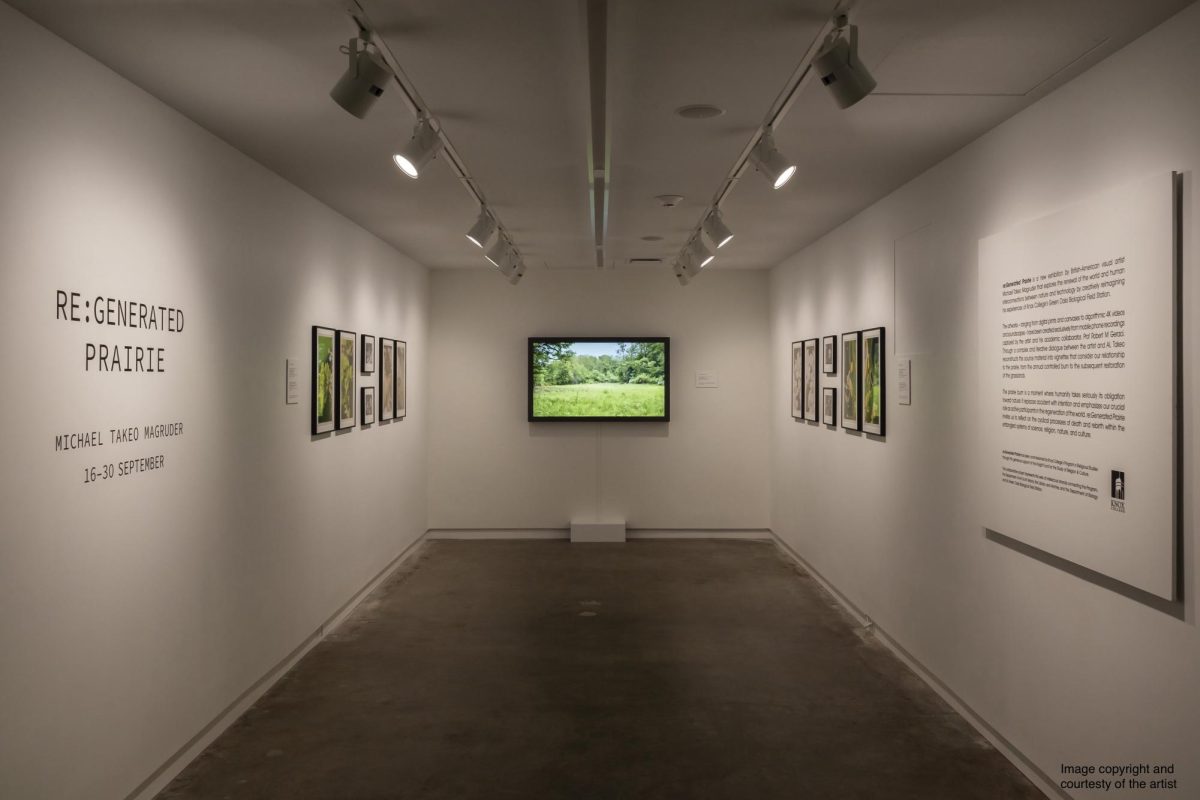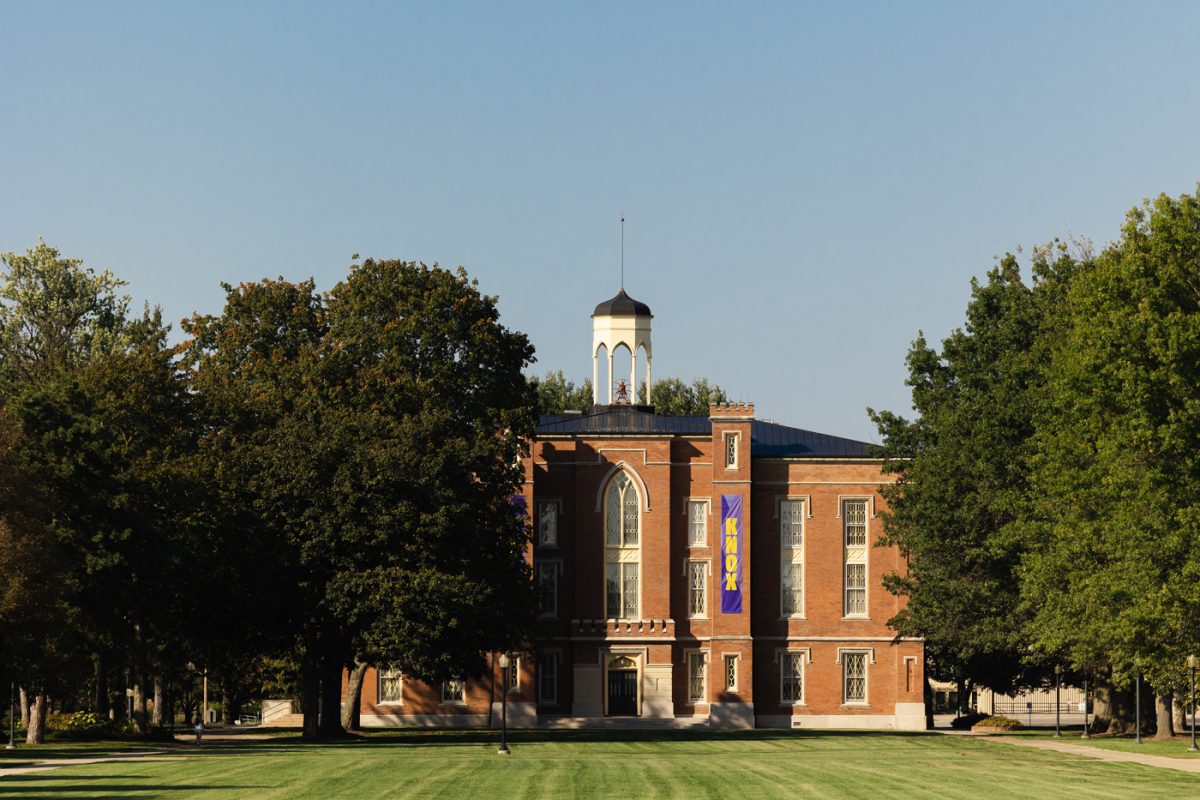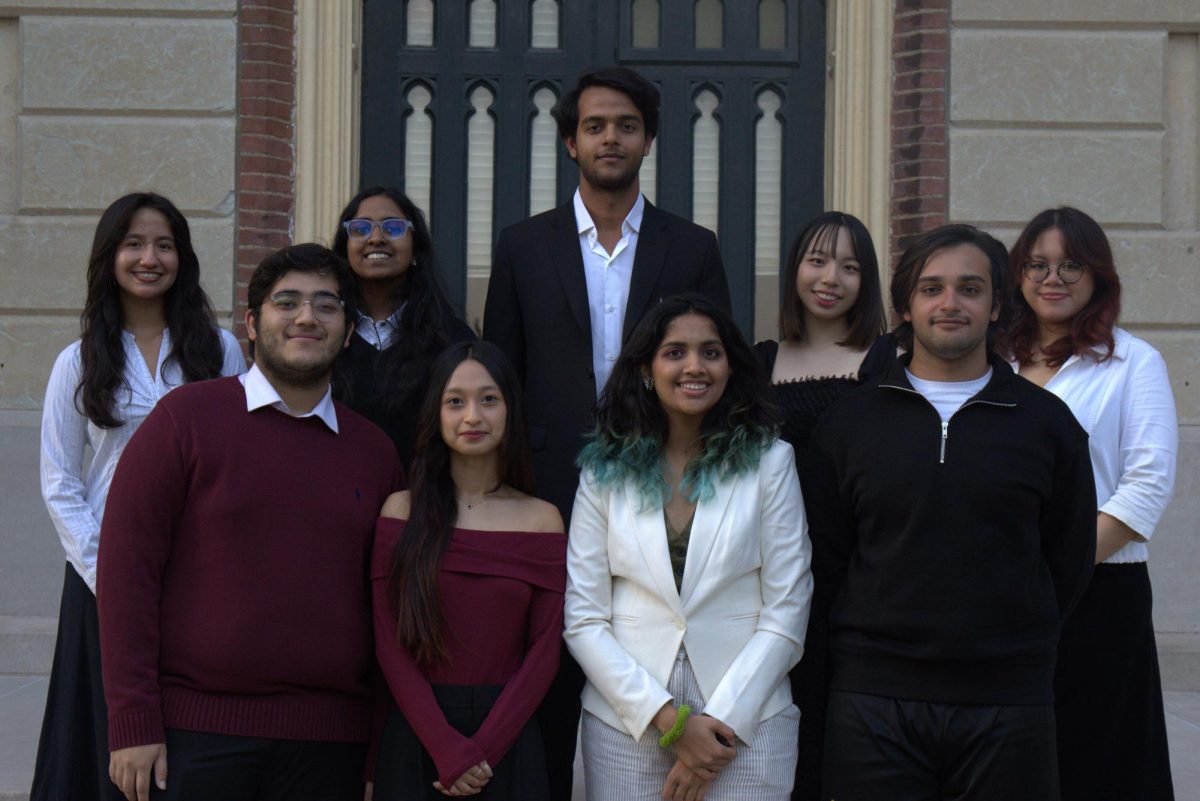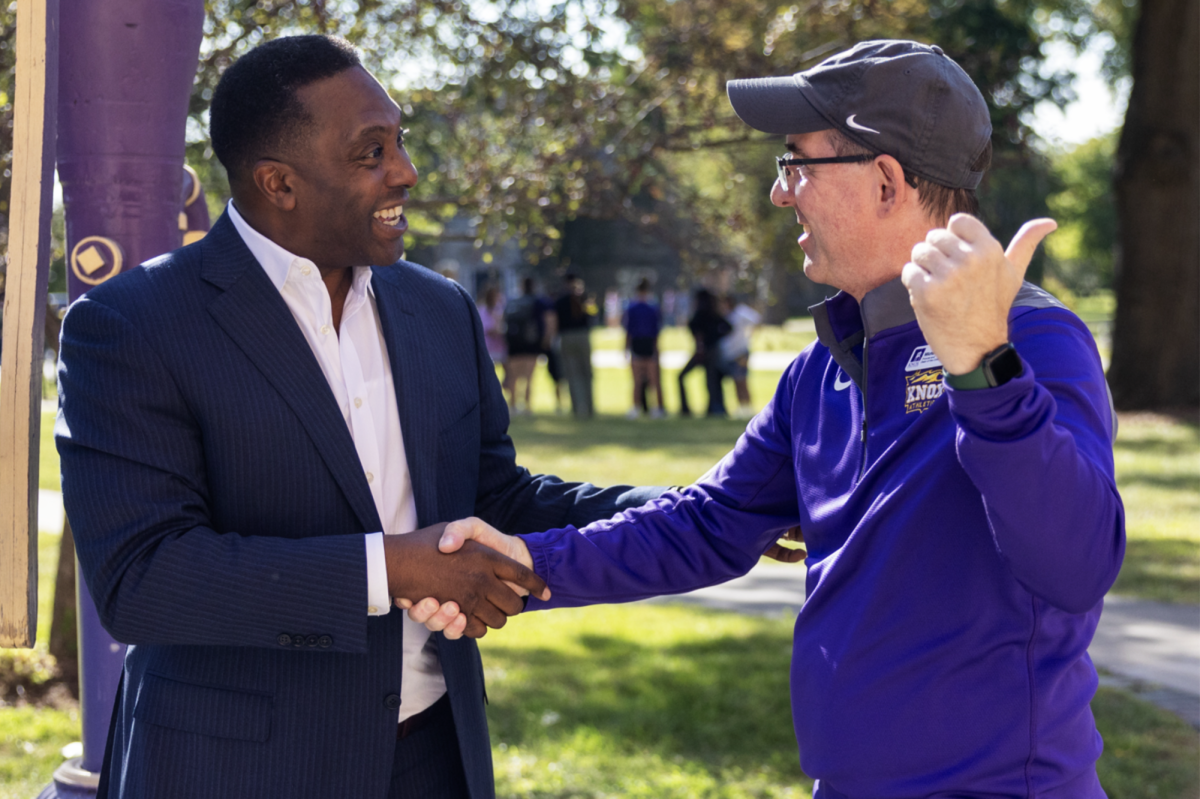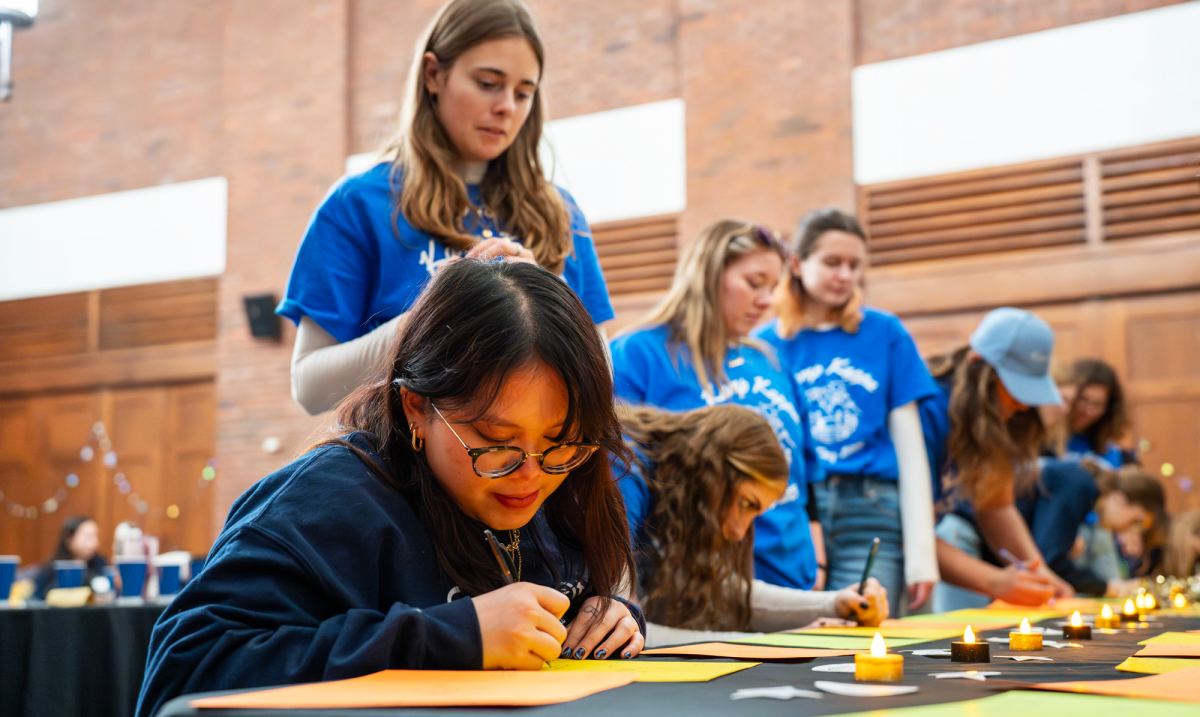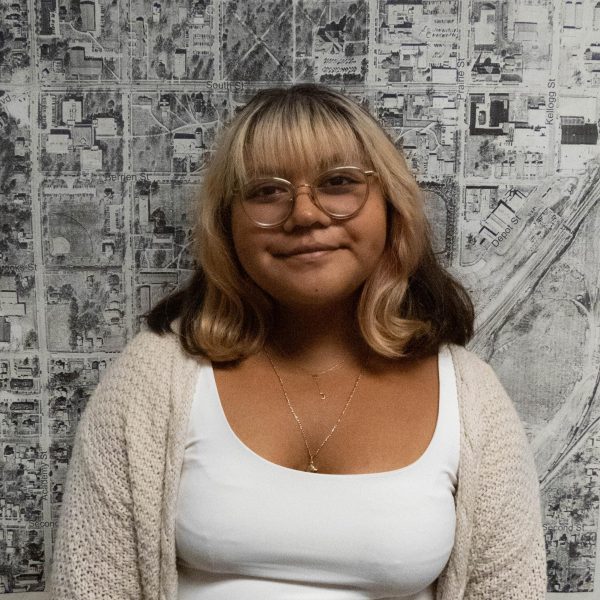Upon the visual artist Michael Takeo Magruder’s exhibit, some students raised concerns about the ethical use of artificial intelligence in Takeo’s work and expressed unhappiness with it. A poster promoting the exhibit displayed in Seymour Union was even vandalized shortly after being put up.
“AI slop.”
“Green Oaks deserves better.”
These are two examples of what was written on the posters.
This project was backed by both the Religion and Art departments, in which Professor of Religious Studies Robert Geraci invited Takeo to do a set of photographic and videographic pieces on Green Oak’s annual prairie burn. According to the Knox College website, these pieces “[were] used to explore mankind’s relationship to the cosmos and the natural world through cycles of renewal and regrowth.”
Geraci, who knew Takeo long before his exhibit at Knox and offered the idea of Green Oaks as the center of his pieces, appreciates the pieces.
“I think they [the exhibit pieces] really do it [Green Oaks] justice. I think the people who weren’t happy didn’t go to the exhibit,” said Geraci.
Geraci also compared the ethical considerations of AI to when someone uses an artist’s work in PowerPoint presentations.
“Putting artists’ work into presentations without credit is no more ethical than using AI art because the moral problem is stealing people’s art in order to produce a new thing,” Geraci said.
Geraci then went on to state that he believes AI will play a great part in our future.
“Our definition of how we think about art through technology changes…[and] I’m willing to wager money that in 20 years, no one will argue whether AI has a place in art,” said Geraci.
Some of the uncertainty around Takeo’s work was due to the environmental impacts of AI and the concept that AI utilizes work from artists without credit. Geraci stated that we must accept that we each make an environmental or ethical impact.
“For what it’s worth, every student owns one of these [points to his phone], which are basically built on child labor,” Geraci said. “So I think we have to be really fair to the reality that none of us are innocent of the sins of our technological culture.”
Takeo discussed his exhibit in a talk on Sept. 25 at the Ford Center for the Fine Arts Round Room, where Senior Jillian Rochford came to raise her concerns.
“What does this [the exhibit] bring to the art realm?” Rochford said. “What does this bring to people? Most AI systems, as you state, are problematic, so why even take the unethical risk of purging a system [Green Oaks] that is so spiritually based?”
Takeo explained his thought process after prompting from Rochford and Art Department Chair Andrea Ferrigno.
“What statement are you making? What kind of relationship [between the art and the statement]?” Ferrigno said.
He answered that his statement on these images is a reflection of his thoughts..
“To quote Oscar Wilde, ‘All art is inherently useless.’ So in a sense, this is my own personal reflection,” Takeo said.
In some images, Takeo presents a landscape of trees, grass, and flowers, where the trees are moving slowly from side to side in a loop. He explained that the point of the exhibit was to have people see things differently and see a regeneration, either good or bad, that leaves you questioning if it was real or not.
“The whole point, I think, was to question the process of how we make images and technology, because what you see here [the photographs], even though it looks the same, it’s not the same. It’s a simulacra, and as you start to go in closer, you can actually see it’s not right,” Takeo said. “Even a painting is a simulacra, and a photograph with grain is, as well.”
After his statement, he went on to say how detrimental the implementation of AI in his work was.
“What I have done to create these works, I could not do them with any of the other digital technology,” Takeo said.
Takeo stated he was certain no one else could create something similar without artificial intelligence.
“AI-sort-of refinement of image generation aspects are so fundamentally different from traditional digital tools. It [AI] is integral,” Takeo said.
During the talk, despite the explanations and the length, both faculty and students often restated their questions. Some people conveyed frustration and confusion about what Takeo’s art was meant to express.
“I have to admit, I left a little bit frustrated. I don’t think I got an answer to my question of what he was hoping to accomplish with the images of Green Oaks,” said Art History Professor Greg Gilbert. “He wasn’t talking about the work aesthetically, and I think that’s what was sort of frustrating for the students because his explanations were more technological.”
Ferrigno also expressed a desire to learn more about Takeo’s process.
“I was hoping for a more robust explanation. I struggled to understand the relationships between the big ideas [art, tech, religion, environment]. It felt surface-level,” Ferrigno said.
Gilbert expressed his opinion on the modern-day use of AI and how it affects him as both an artist and an art history professor.
“I haven’t really fully wrapped my head around AI. I do think as a historian, I feel like I need to be open and responsive to certain kinds of creative attitudes or creative positions that perhaps as an artist, I would not endorse or that I would find problematic,” said Gilbert. “I admit I would be more interested in artists whose use of AI would be to critically interrogate AI as opposed to artists that are just kind of playing with the technology and wanting to manipulate reality for the sake of manipulating reality.”
Takeo, however, views AI in art much differently than students at the event did, as he stated during his talk.
“AI is like an instrument, and I am like a musician who’s trying to figure out how to play the instrument,” said Takeo. “So you’re not taking away the human decision-making, you’re integrating that [human decision-making], and you’re saying, ‘what can technology do in combination to what the human can do’.”

